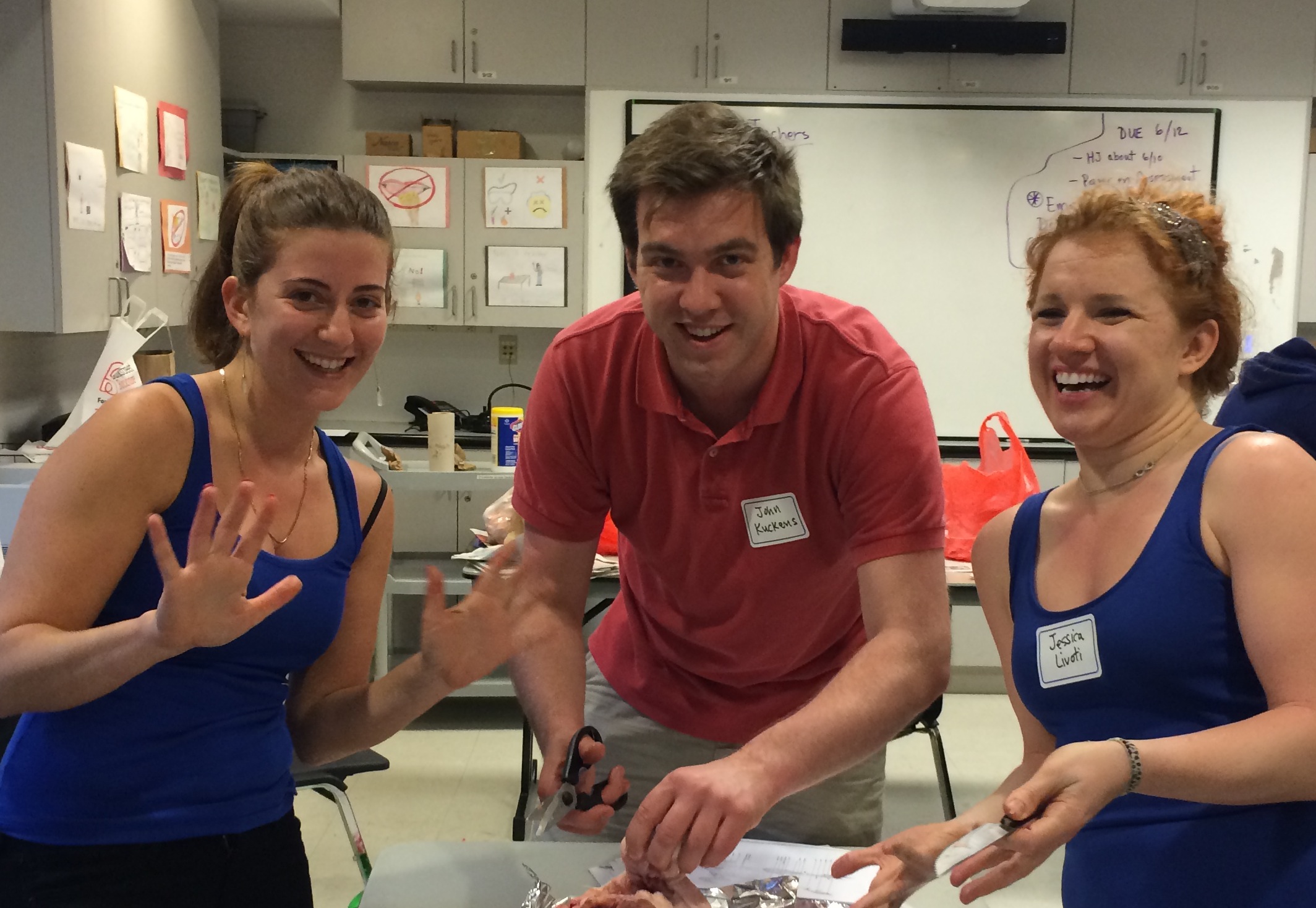This summer, I am taking a course called “Science for Teachers” with Stan Chu. In one of our first classes, Stan nonchalantly mentioned that he is in his 48th year of teaching. The class focuses on building meaningful frameworks for science lessons and how to ask questions that encourage exploration and don’t shut down thinking. And so, last week, we cleaned a chicken.
To my surprise, many classmates were confused by what “cleaning” a chicken meant. For those of you out there who are squeamish, be prepared. This was the dismantling, by hand and tool, of a chicken’s body, to prepare it for eating. But why on earth do this in a graduate class about teaching science?
Before we got our own chickens to clean, our Stan showed us what to do while we sat crowded around him. The chicken he had was on his table, the whole scene reminiscent of some victorian medical demonstration. Stan took his time in taking that chicken apart. We identified all of the internal organs, several bones, and made comparisons to what we know of our own bodies. It was interesting because when these things are done in kitchens, they have to be done quickly to reduce meal preparation time. Unused pieces are quickly discarded, and the “good meat” is getting seasoned or baked before you know it.
As it turned out, it was very useful for me as a teacher to experience this with other teachers before  attempting anything like it with students. While I have certainly helped to prepare meals of chicken or turkey growing up, I better realize how removed from the real thing a “whole” chicken at the supermarket is.
attempting anything like it with students. While I have certainly helped to prepare meals of chicken or turkey growing up, I better realize how removed from the real thing a “whole” chicken at the supermarket is.
Stan mentioned that some elementary students have in the past predicted that there would be a plastic bag inside full of the gibblets. It really resonated with me. “I would never have thought that!” I assured myself. But my seemingly concrete knowledge of the chicken’s insides was limited too. Because out came the intestines, which for some reason it never occurred to me would be in there.
So how do I use this to teach science?
This would be an excellent way to begin a unit on food, sources of food, or farming. It also is meaningful because so many people eat chicken, and students might even see it being prepared at home in the kitchen. Not only could they then have the skills to help out, but they could also respect where that food is coming from. I think this kind of deep thinking is not always easy to assess for and show on paper, but it is an important life skill I wouldn’t want my students to leave the classroom without.